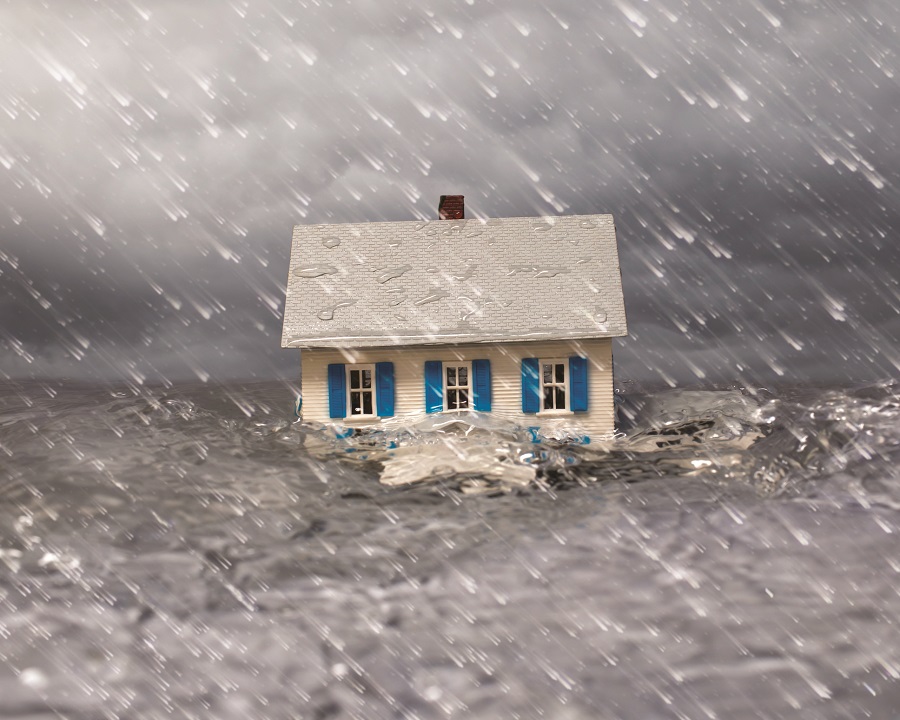Natural disasters took an unprecedented toll on US homes in 2023. As of mid-September, a record 25 floods, hurricanes, tornadoes and other weather events had caused more than $1 billion in damage…each! Homeowners end up paying a significant share of disaster-repair costs out of their own pockets, because insurance often fails to provide as much protection as they expect.
Here’s how to make your home more disaster-resistant…and be sure that your insurance coverage is appropriate for your home’s risks…
Prepping Your Home for the Worst
Different properties face vastly different natural disaster risks—and those risks aren’t always obvious. To get a realistic sense of your home’s risks, enter your address into RiskFactor.com, which evaluates risk from floods, wildfire, heat and wind. Then visit the US Geological Survey website at USGS.gov/programs/earthquake-hazards to determine your earthquake risk—California homes aren’t the only ones in danger.
Once you know your risk, take steps to protect against natural disasters…
Flood risk. Owners of properties in low-lying coastal areas know that they face flood risk, but inland properties can flood, too, when rivers and creeks overflow or extreme rainfall events cause pluvial flooding. Even landlocked, mountainous Vermont was devastated by floods this past July. Cost-effective ways to reduce your home’s flood risk…
Landscaping. A landscaping company may be able to use a backhoe or excavator to alter the drainage around the house, creating a swale (depression) to direct water away from the building.
Relocate essential equipment. It may be practical to elevate the home’s mechanical components located in the basement or a low-lying ground floor. Examples: A furnace, boiler, water heater or washer/dryer could be raised onto concrete blocks or moved to a higher floor. If these can’t be raised, a concrete curb could be built around them to keep several inches of floodwater away.
Secure the fuel tank. If there’s a tank in the basement or at a low elevation outside the home, anchor it down firmly. Otherwise, floodwaters could float the tank, breaking its fuel lines and causing a fuel spill or even a fire.
Go water-resistant. Opt for tile or cement flooring in a basement or slab-on-grade, rather than carpet or wood…and use moisture-resistant fiberglass-faced wallboard rather than traditional paper-faced wallboard.
Wildfire risk. The most cost-effective way to reduce a home’s wildfire risk is to reduce the amount of flammable material near the home.
Regularly clear dead leaves and downed branches. Trim or remove trees within 100 feet of the home so that their canopies don’t connect. Remove dead leaves from gutters and roof valleys.
Don’t use recycled railroad ties as landscaping borders. They’re treated with creosote and are burnable and toxic. If your home is near a property line, coordinate efforts with neighbors.
Keep areas under wood decks clear of combustible materials. Don’t stack firewood or store vinyl deck furniture here, and don’t let fallen leaves that blow under the deck linger. Consider adding screening to block leaves from getting under the deck in the first place.
Have “ember-excluding” soffit and ridge vents installed. Without these, your home could burn even if flames never lap up against its walls. Many homes burn because embers from nearby wildfires are blown through vents into their attics.
Choose fire-retardant materials. When it is time to replace your roof, choose metal, slate or concrete roofing rather than asphalt shingles. Consider having a stone patio instead of a wood deck—or at least have the wood deck made from fire-retardant treated wood.
If you live in a region that has an extreme dry season: Consider having a phosphate-based chemical fire retardant such as Phos-Chek sprayed onto the vegetation surrounding your home at the start of each dry season. These products aren’t useful in areas where it rains regularly and/or if the vegetation is watered by sprinklers because they’ll wash away.
Hurricane-force wind risk. Wind can cause a significant amount of damage. Steps to consider…
Remove branches or trees that overhang the home and/or are close enough that they could cause damage during a windstorm.

Replace inward-opening exterior doors with outward-opening ones, which won’t blow in.
Strengthen the connections between your home’s walls and the roof. Ask a contractor to evaluate whether it’s feasible—this could reduce the odds that wind will rip off the roof. But it is most likely feasible only if the home has an unheated attic area, that allows access to the framing where the walls and roof meet.
If the home is being built or under-going big renovations: Consider impact-resistant windows that are less likely to break if wind-blown debris strikes them.
If your home is in a tornado-prone area: Consider having a safe room installed. Prefab safe rooms capable of withstanding tornados are available for less than $10,000 and can be installed in a basement or, depending on the home design, in a closet beneath stairs.
 Alex Wilson, president of the Resilient Design Institute, a nonprofit that promotes disaster-resistant construction, and founder of BuildingGreen, Inc., a design and construction consulting company in Brattleboro, Vermont. ResilientDesign.org
Alex Wilson, president of the Resilient Design Institute, a nonprofit that promotes disaster-resistant construction, and founder of BuildingGreen, Inc., a design and construction consulting company in Brattleboro, Vermont. ResilientDesign.org
Boost Your Insurance Coverage
Many homeowners assume that their insurance will cover their disaster losses. But there may be gaps in this coverage, and some disasters are not covered at all.
Flood coverage. Surprise! Standard homeowner’s insurance does not cover flood damage. Homeowners must purchase separate flood insurance policies to protect against this risk. These policies usually are purchased through the National Flood Insurance Program (NFIP, FloodSmart.gov), though private flood insurance is also available.
Caution: NFIP coverage for damage to the home is capped at $250,000, which might not be enough to rebuild the home. Private flood insurance has no cap. But before you pay for private coverage, check with your state’s department of insurance and/or your insurance broker to determine if the company issuing the flood policy is licensed as an “admitted” insurer or if it is a “non-admitted” (also called “surplus lines”) insurer. Non-admitted insurers do not participate in the state guarantee fund, so a claim with one of these companies might not be paid if the insurer becomes insolvent following a widespread flooding event. There also are companies that sell an “Excess Flood” policy to add on top of NFIP coverage.
The average cost of NFIP flood insurance is slightly under $900 per year, but prices can climb dramatically if the property is at high flood risk. The size of the home, in conjunction with other local factors related to rebuilding costs, will impact how much coverage (up to $250,000) you get. A small home is more likely to get less than $250,000 coverage, resulting in a lower premium than a home that has the same risk but is much bigger and gets coverage for $250,000.
Homeowners tend to purchase flood insurance only when they are required to do so by their mortgage lender because their home is in a designated high-risk flood zone, but nearly half of flood-damaged properties are not located in these designated areas.
Hurricane and strong wind damage. Whether and how well this is covered by your homeowners insurance depends in part on where you live. Near the South Atlantic and Gulf Coasts, homeowners policies often exclude hurricanes and other wind damage entirely. It sometimes is possible to add a wind-damage rider to these policies.
Hurricane-prone coastal states often run insurance pools of last resort for homeowners who cannot get coverage elsewhere. These government programs might be called “beach” or “windstorm” policies, and they tend to be expensive.
Even if your homeowners insurance does cover hurricanes, it might not cover them especially well, particularly if you live in a state on the Atlantic or Gulf Coast or in Hawaii. Many states in these regions allow insurers to set a separate, higher deductible for hurricane claims. It’s not uncommon for a policy that has a $1,000 deductible for most claims to have a deductible of equal to 5% or even 10% of the insured value of the home for hurricane wind-related claims. With a $400,000 structure, that could result in out-of-pocket costs of $20,000 or $40,000.
Earthquake damage. Again, standard homeowners policies don’t cover earthquake or landslide damage.
In California, such coverage usually is purchased through the California Earthquake Authority (Earthquake
Authority.com). The typical policy costs a little less than $1,000 per year but can climb to many times that amount. A hefty 15% deductible is standard—that’s $60,000 out of pocket if a $400,000 structure is destroyed. Personal property coverage is capped at $25,000—that is far too little to replace all the items in a typical home.
Homeowners in parts of Alaska, Arkansas, Hawaii, Idaho, Illinois, Kentucky, Missouri, Montana, Nevada, Oregon, South Carolina, Tennessee, Utah, Washington and Wyoming also face substantial earthquake danger. They often can add an earthquake rider to their existing homeowners policy, or separate earthquake insurance coverage might be available. Ask your insurer or an insurance broker for details.
Trouble Getting Insurance?
If private insurers consider your property too risky to insure, your state might offer a FAIR plan, a government-created homeowners insurance program of last resort. (Similarly, in addition to FAIR plans, there are “Citizens Insurance” companies in Florida and Louisiana, which are established by the government.) But not only are FAIR plans expensive, they often don’t include protection for the full range of perils covered by standard homeowners insurance—coverage for theft, liability, freezing and/or water damage might be missing, for example. Homeowners who purchase FAIR plan coverage should consider also purchasing “Difference in Condition” (DIC) coverage from a private insurer to fill these gaps.
Beware: FAIR plans—along with many other homeowners insurance policies—might provide only “actual cash value” (ACV) coverage. Unlike “replacement cost coverage,” which pays the entire cost of replacing a home component that has been destroyed by a disaster less the policy’s deductible, ACV coverage pays only the depreciated value of that component, less the deductible. That often leaves homeowners facing massive out-of-pocket costs.
![]() Doug Heller, director of insurance for Consumer Federation of America, an association of nonprofit consumer organizations, Washington, DC. ConsumerFed.org
Doug Heller, director of insurance for Consumer Federation of America, an association of nonprofit consumer organizations, Washington, DC. ConsumerFed.org


